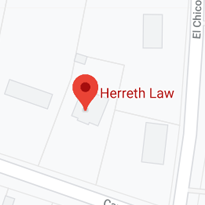Nearly half of all fatal car wrecks in Texas occur in the energy-producing zones centered around the Barnett Shale/Permian Basin areas of North and West Texas.
Over 1,600 people lost their lives in this area during 2018, many of them along Interstate 20. According to TxDOT, speed was the leading cause of these collisions, followed closely by distracted driving. John Esparza of the Texas Trucking Association added that congestion is a problem. These freeways were not designed to accommodate as much traffic as they currently carry. The state is trying its best to expand and improve the roads, but “they just can’t keep up,” he said.
The large number of tractor-trailers also contributes to the number of fatal crashes in this area.
First Party Liability
Speed is one of the most common causes of fatal crashes. Excessive velocity increases the risk of a crash and the force of a crash.
Velocity multiplies stopping distance. That’s the ground a vehicle covers from the moment the driver sees a hazard until the driver safely stops the vehicle. At 30mph, stopping distance is about six car lengths. At 60mph, stopping distance triples to about eighteen car lengths. Other factors, such as environmental conditions and vehicle weight, may increase stopping distance even further.
Speed also increases the force in a collision. Velocity transforms a property damage only “fender bender” into a serious injury or fatal collision. Additionally, speed transforms loose objects in the car, like cell phones, into high-speed missiles.
Distraction is a serious problem as well. Hand-held phones get much of the attention because they combine all three forms of distracted driving:
-
Visual (eyes off the road),
-
Cognitive (mind off driving), and
-
Manual (hand off the wheel).
Hands-free phones may be even worse. These gadgets are visually and cognitively distracting. Additionally, these devices give drivers a false sense of security.
Sometimes, both excessive speed and cell phone use violate Texas law. If a tortfeasor violates a safety law and causes a crash, the tortfeasor may be liable for damages as a matter of law. In other situations, such as driving too fast for the conditions or using a hands-free speakerphone while driving, victim/plaintiffs may use circumstantial evidence to establish ordinary negligence.
Third Party Liability
Damages in car wreck claims usually include compensation for economic losses, such as medical bills, and noneconomic losses, such as pain and suffering.
If a large truck was involved in the crash, the tortfeasor may not be the only party responsible for damages. A Fort Worth personal injury attorney may file a claim against the transportation company, based on the respondeat superior doctrine. Under this rule, employers are liable for the negligent acts of their employees if:
-
The tortfeasor was an employee
-
Who was acting in the scope of employment at the time.
Both these elements are defined in broad, victim-friendly terms. For example, an “employee” is not just a regular worker. Independent contractors, owner-operators, and even unpaid volunteers may be employees for negligence purposes.
Car crash victims may be entitled to substantial compensation. For a free consultation with an experienced personal injury attorney in Fort Worth, contact Herreth Law. Home and hospital visits are available.

